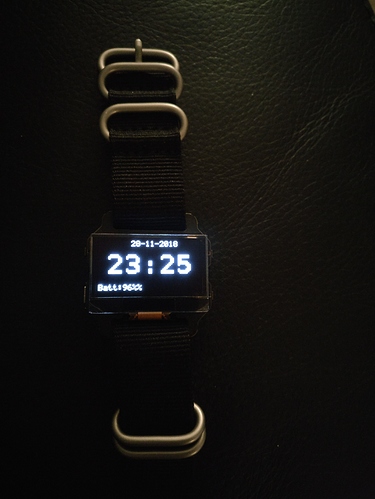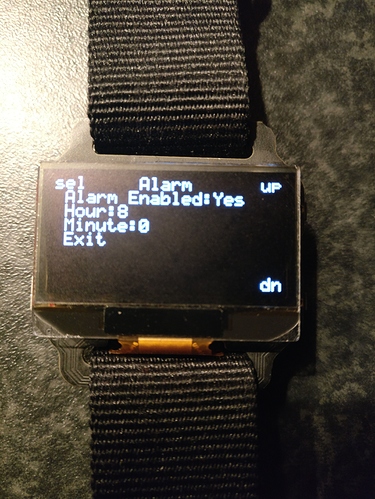A re-write of basic watch using a text based oled library is well underway. I have spent a few hours this evening making a good start.
So far I have re-created the watchface and hourly tones. I have a minor screen timeout issue to resolve and then I can work on the button logic followed by creating all the menus again.
Once I have reached parity with the existing version I will add in the Bluetooth additions in the other post.
Hopefully after all this there will still be more storage left to add more features.



 I noticed that while I navigate at the menu I can see the screen refresh as I press the up or down button. Did you see the TapClock watch face? It has two features that I fall in love:
I noticed that while I navigate at the menu I can see the screen refresh as I press the up or down button. Did you see the TapClock watch face? It has two features that I fall in love: Great news, need to test again.
Great news, need to test again.